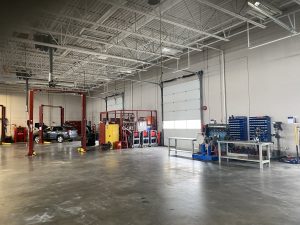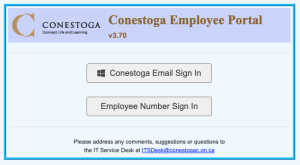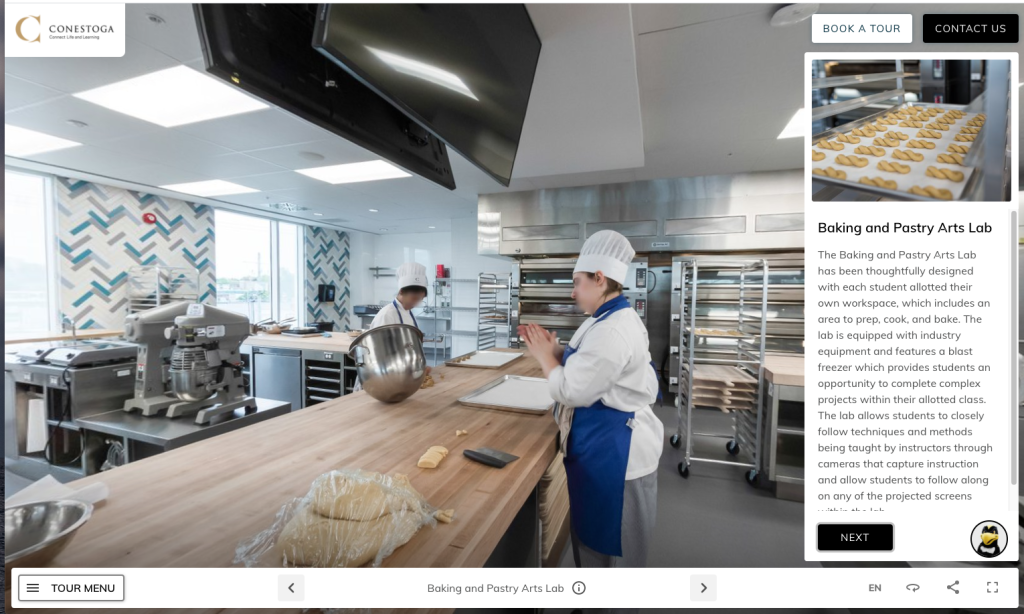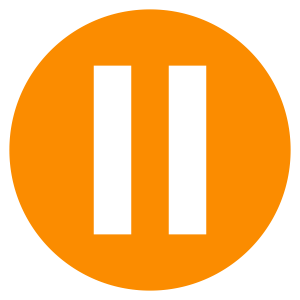2.5 Semester Structure, Course Delivery Modes, and Classrooms
Learning Outcomes
Identify the semester structure and modes of delivery
Academic Dates
The academic year runs from September 1 to August 31. The Academic Dates page provides key semester start and end dates and key deadlines and other important College dates. As well, it provides holidays on which there are no scheduled classes.
Visit the Academic Dates page to note when classes and test or exams should not be held. Take these dates into consideration when planning assignment due dates.
Note as well that Conestoga has a Religious Holy Day and Spiritual Observance Policy that asks faculty to announce at the beginning of the course that students notify their instructor if they will be absent to observe a recognized religious holiday.
Semester Structure

The academic year is three semesters: Fall, Winter, and Spring. Most courses start and end within 1 semester.
The structure of a typical semester at Conestoga is 15 weeks: 7 teaching weeks, 1 Student Success week, then 7 more teaching weeks. There are some exceptions to the typical semester structure, such as 12 weeks condensed, 8 or 16-week apprenticeship blocks, etc. Conestoga also has an Apprenticeship Day Release (one day a week for 35 to 40 weeks).
Note that the same Course Outline may be delivered in both a 15-week course and a condensed course. All meeting dates and assignment dates within the semester of the course should be indicated on the Instructional Plan. All course activities and assessments should be completed by the end of the course (save for supplementals or other additional student support activities).
Modes of Delivery

Conestoga provides a range of different modes of delivery for programs and courses. For many programs, Conestoga provides courses in various modes of delivery to provide students with flexible and convenient access to their learning. Some courses require no in-person teaching at all!
4 Modes of Course Delivery
Here are the ways that courses are delivered. Your course will be delivered in one of these four modes.
- Asynchronous Online – 100% online delivery (i.e., “fully online”) with no assigned day or time requirements, independent course completion. Asynchronous courses have no assigned class schedule and are completed fully online in eConestoga (Brightspace D2L).
- Synchronous Online – Courses are delivered 100% or fully in a virtual, real-time classroom on Zoom or Teams during an assigned class schedule. There is no additional self-paced, anytime-supported learning in eConestoga.
- Hybrid – Any combination of timetabled in-person or synchronous online and supported asynchronous delivery. Hybrid courses do not need to have in-person content if the course is scheduled for students to meet synchronously online.
-

Heavy Construction lab room at Guelph by Elan Paulson, CC-BY In-Person – Classes are held in person on a campus/site in a classroom lab/shop/studio for the course duration.
Typically, if a course has scheduled in-person class meetings, those meetings will not take place at any time via Zoom or Teams.
The practicum is another type of course in which practical experiences are planned, supervised, and evaluated practice.
5-Minute Web Search
Do a web search now!
- If you are teaching online synchronous, read the Zoom Privacy and Consent guidelines
Hyflex
Some hybrid courses might be delivered in a HyFlex classroom. A course using HyFlex classrooms is one where delivery blends in-class and synchronous online participation modes, using classrooms outfitted with webcams and microphones. These courses also use both synchronous and asynchronous learning experiences.
If you are teaching in a HyFlex classroom, Teaching and Learning will provide you with preparatory training and resources. Learn more about HyFlex at Conestoga.
Finding Your Teaching Schedule and Mode of Delivery

Available in the Employee Portal is each faculty member’s teaching timetable. The timetable provides faculty with weekday, week hour(s), and location of scheduled classes. All scheduled class hours must be spent teaching and supporting the learning of students.
Faculty teaching timetables are created to best suit all stakeholders (faculty, student, space considerations, etc.) and should not be modified based on the preferences of the faculty or students. This expectation applies even if students agree to meet at a different time or to forego break times to end or start class early.
5-Minute Web Search Activity
Do a web search now!
- Learn more about how to access your teaching timetable and course mode of delivery
Conestoga Classrooms
In-Person Classrooms

Conestoga’s campuses provide classrooms, labs, and learning spaces in various formats and sizes that support different classroom activities and modes of course delivery. College classrooms, and many labs, have teaching tools (e.g., computer, projector, whiteboard) for faculty use. Policies and guidelines, such as the Acceptable Use of Technology Procedure, have been created to support safe spaces for learning.
Conestoga provides online “virtual tours” of campus buildings, including classrooms, labs, offices, and common spaces.
Synchronous Online Classrooms
Conestoga provides licensed virtual conferencing platforms to engage with students synchronously online (Zoom, MS Teams). Faculty must use one of the licensed platforms to meet with students during scheduled class time. All faculty are provided with a license to use either of these tools, and the majority opt to use Zoom. Conestoga’s IT services provide basic training for synchronous online classrooms, and Teaching and Learning offers helpful tips on preparing to teach in Zoom.
Asynchronous Online (“Fully Online”) Learning
Conestoga’s LMS, eConestoga, is the web-based location for online asynchronous teaching and learning. It is also the location for the Essential Elements for courses in all modes of delivery. Faculty are provided with support and training to use eConestoga.
5-Minute Web Search Activity
Do a web search now! Select the hyperlinks below to explore
- a virtual tour of a Conestoga campus building
- how to use Zoom and MS Teams for teaching (Tech for Teaching)
- Conestoga Online programs and courses (watch the main page video!)
 Section 2.5 Review
Section 2.5 Review
Please pause and answer these six practice questions to review and check your learning!
